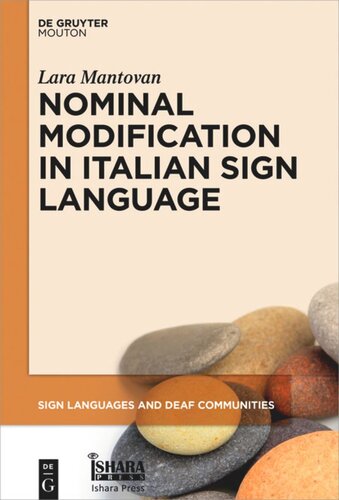

Most ebook files are in PDF format, so you can easily read them using various software such as Foxit Reader or directly on the Google Chrome browser.
Some ebook files are released by publishers in other formats such as .awz, .mobi, .epub, .fb2, etc. You may need to install specific software to read these formats on mobile/PC, such as Calibre.
Please read the tutorial at this link: https://ebookbell.com/faq
We offer FREE conversion to the popular formats you request; however, this may take some time. Therefore, right after payment, please email us, and we will try to provide the service as quickly as possible.
For some exceptional file formats or broken links (if any), please refrain from opening any disputes. Instead, email us first, and we will try to assist within a maximum of 6 hours.
EbookBell Team

0.0
0 reviewsSince the recent creation of a large-scale corpus of Italian Sign Language (LIS), a new research branch has been established to study the sociolinguistic variation characterizing this language in various linguistic domains. However, for nominal modification, the role of language-internal variation remains uncertain. This volume represents the first attempt to investigate sign order variability in this domain, examining what shapes the syntactic structure of LIS nominal expressions. In particular, three empirical studies are presented and discussed: the first two are corpus studies investigating the distribution and duration of nominal modifiers, while the third deals with the syntactic behavior of cardinal numerals, an unexplored area.
In this enterprise, three different theoretical dimensions of inquiry are innovatively combined: linguistic typology, generative linguistics, and sociolinguistics. The research setup involves both quantitative and qualitative data. This mixed approach starts from corpus data to present the phenomenon, examine linguistic facts on a large scale, and draw questions from these, and then looks at elicited and judgment-based data to provide valid insights and refine the analysis. Crucially, the combination of different methods contributes to a better understanding of the mechanisms driving nominal modification in LIS and its internal variation.